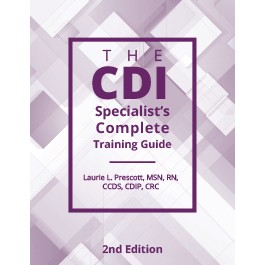Book excerpt: Tandem reviews

Training Guide, Second Edition
By Laurie L. Prescott, MSN, RN, CCDS, CDIP, CRC
After shadowing teammates, try tandem record reviews where your mentor, manager, or other CDI staff member reviews the record first and then turns the record over to you to let you try your hand at it. Then compare notes. Also consider flipping this activity with you, as the new CDI specialist, reviewing the record first and then turning it over to your CDI manager or mentor to see where you were successful or where you might have picked up additional information.
Spend some time documenting and developing your own review processes; you will need to develop a method or sequence of record review and stick with it. For example, jumping from one section to another in search of a tidbit or clue may cause you to lose focus. In such situations, the larger clinical context may be lost on that elusive detail, costing you valuable productivity time—you may not see the forest for the trees, so to speak.
Take time to discuss items you may have missed with your manager/mentor and where this information was found. If queries need to be written, draft them together. This process may seem laborious, but with a few afternoons concentrated on such work, you will begin to feel more comfortable finding your way through the complexity of the medical record to the valuable nuggets of information you need.
When conducting tandem reviews, be sure to conduct at least a few rounds with fellow CDI staff members when available but also several with your CDI manager to ensure your training meshes with administrative goals and objectives. During these tandem reviews, ask:
- Where in the medical record did each individual begin his or her review?
- What were the principal and secondary diagnoses identified? If they differed, discuss why and ask what sequencing guidance came into play when making that determination.
- What query opportunities were identified?
- What type of query did each reviewer formulate (i.e., did one person draft a yes/no query and the other write an open-ended query)?
- Did each individual identify the same clinical indicators supporting his or her respective query?
Editor’s note: This article is an excerpt from The CDI Specialist’s Complete Training Guide, Second Edition.
